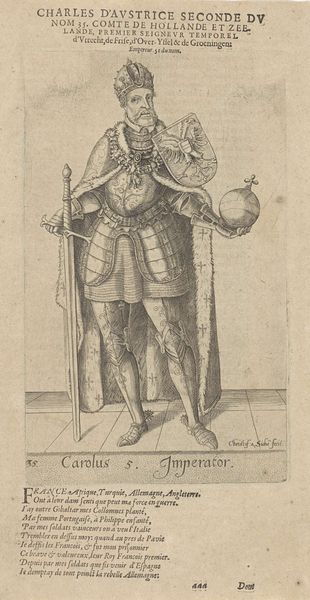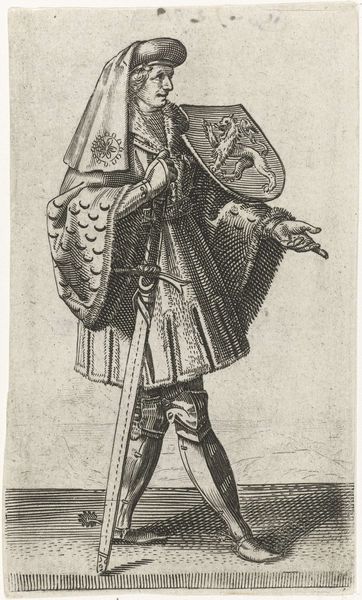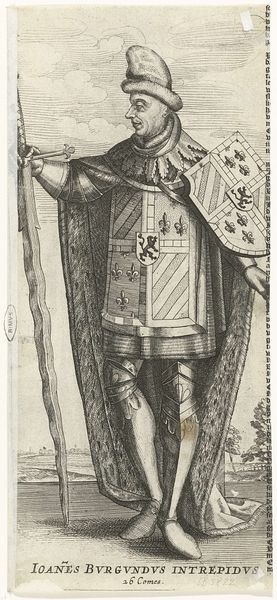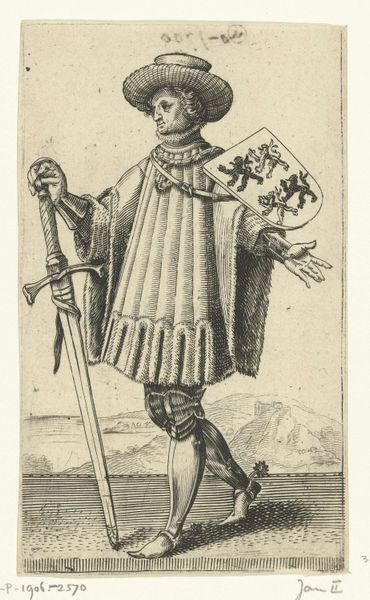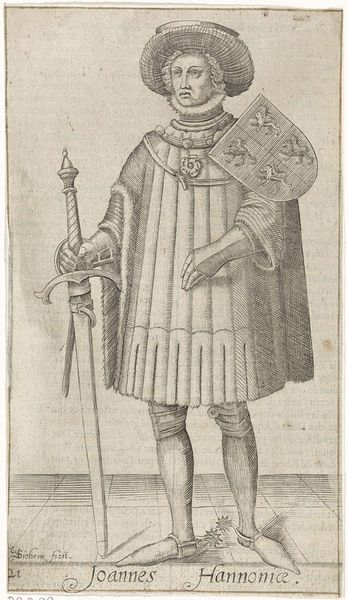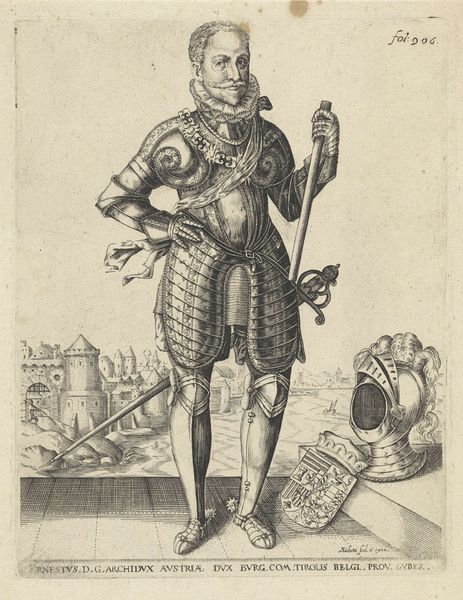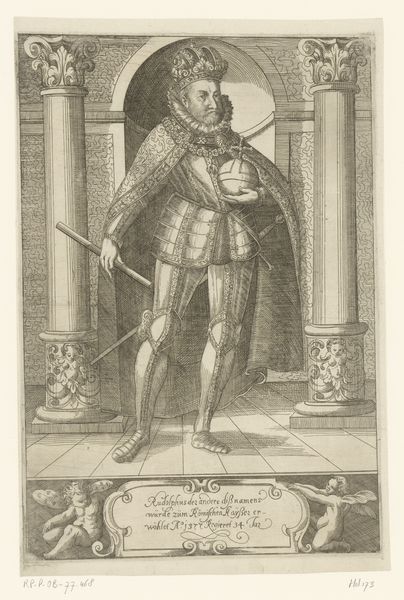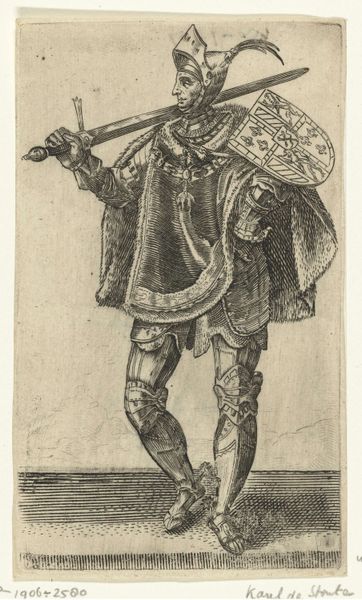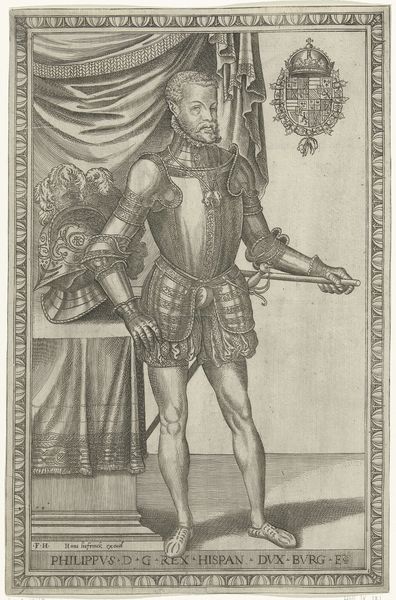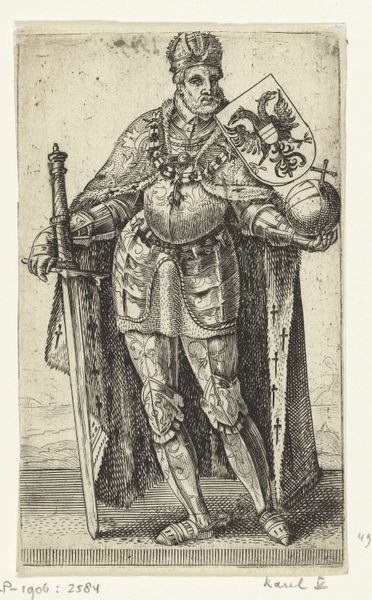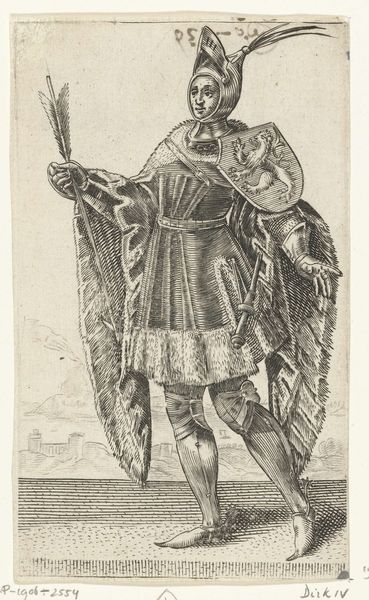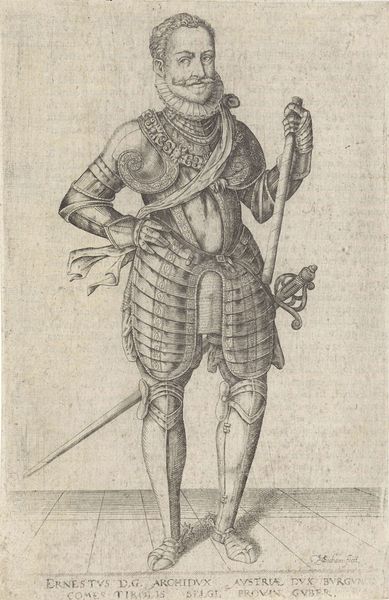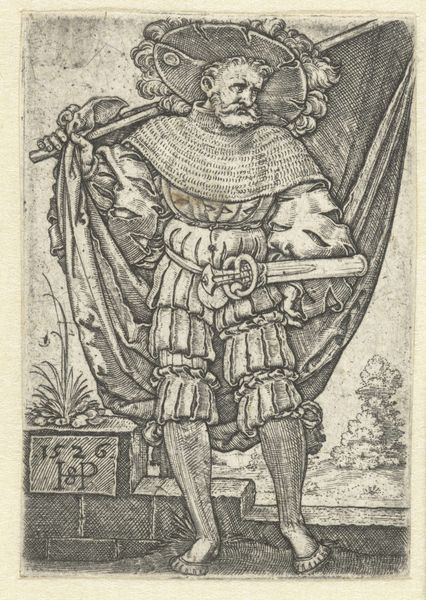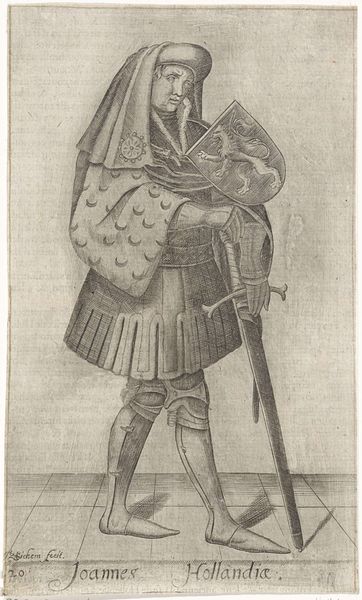
Portret van Karel V van Habsburg, Duits keizer, koning van Spanje c. 1608s - 1618s
0:00
0:00
print, engraving
#
portrait
#
medieval
# print
#
11_renaissance
#
portrait drawing
#
history-painting
#
engraving
Dimensions: height 180 mm, width 115 mm
Copyright: Rijks Museum: Open Domain
Editor: Here we have an engraving of “Portret van Karel V van Habsburg, Duits keizer, koning van Spanje,” or “Portrait of Charles V of Habsburg, German Emperor, King of Spain” made sometime between 1608 and 1618 by an anonymous artist. It looks like the image was printed onto a page from a book, almost like it’s immortalizing him within historical texts. What do you make of its creation as a printed portrait? Curator: It’s fascinating how print culture amplified power. Charles V was already a figure of immense authority, but mass-reproduced images like this, disseminated widely, solidified his image across territories. Think about it – this wasn't just a painting for a palace; it could be reproduced and distributed, shaping public perception of him. Editor: So it’s less about accurate likeness and more about projecting an ideal? Curator: Exactly. Note the meticulous details in the armor, the regal bearing. The orb and scepter are classic symbols of authority, but within the context of print, they become standardized symbols *of* authority, easily understood and universally recognizable across different languages and social classes. Editor: It almost feels like propaganda, then. Curator: That’s a strong word, but it gets at the heart of the matter. How did visual representation reinforce existing social hierarchies? These weren't neutral images; they were carefully crafted tools in the assertion and maintenance of power. Think about the implications for political discourse at the time! Editor: I never considered the role of printmaking in shaping political figures before. Curator: And the layering of meaning… each symbol in his regalia tells a story, yes, but so too does the choice of a readily reproducible medium! It really spotlights the role of art in reinforcing social structures.
Comments
No comments
Be the first to comment and join the conversation on the ultimate creative platform.
